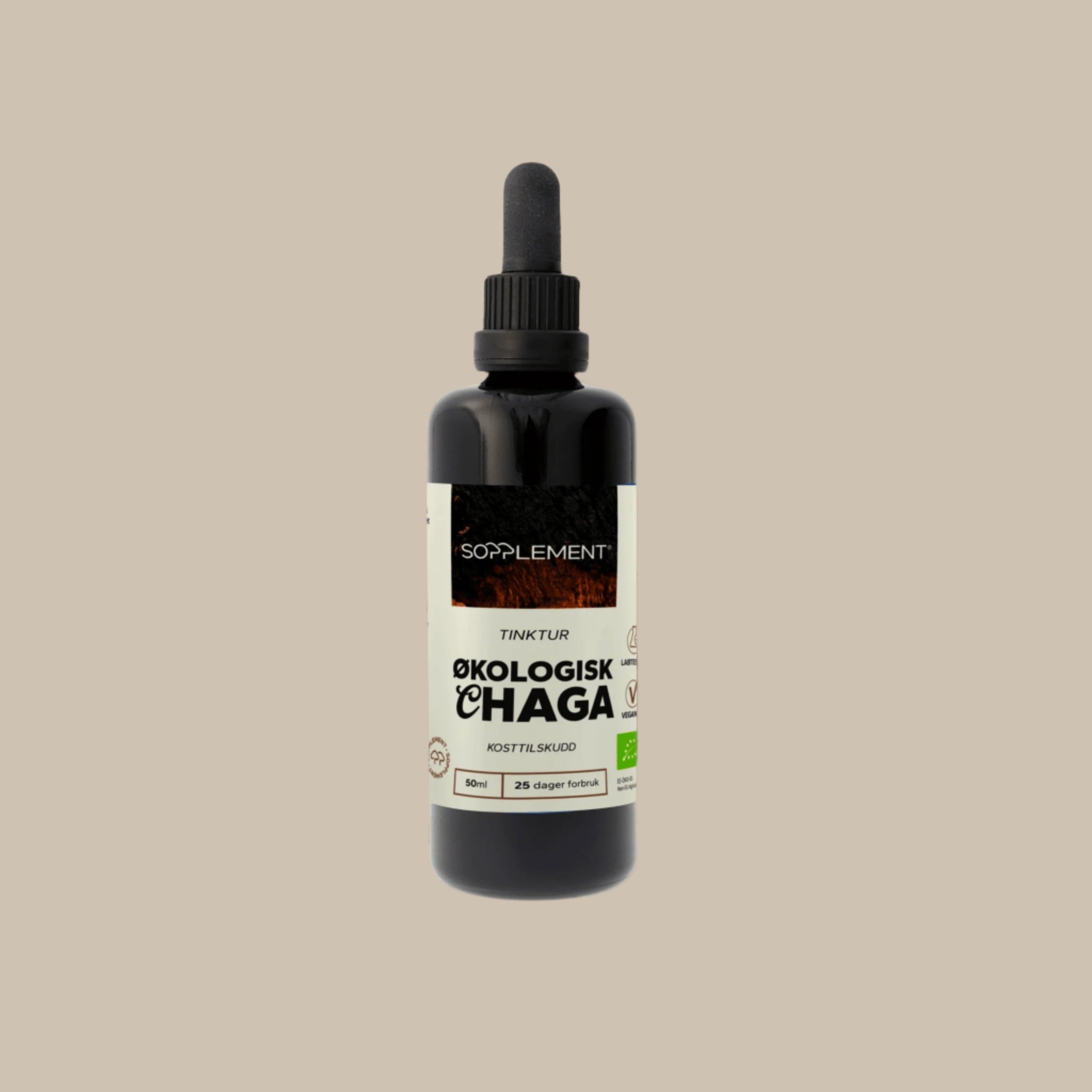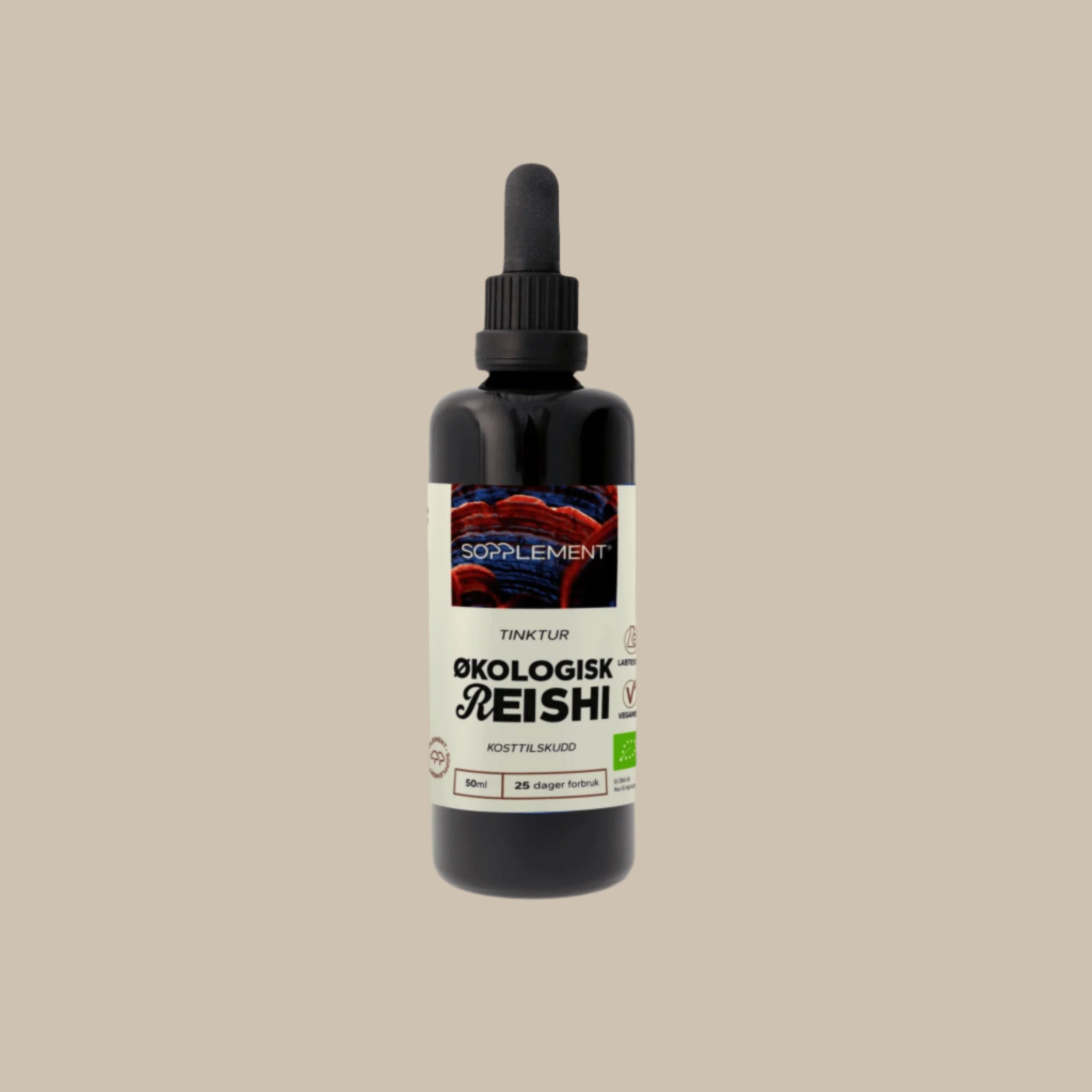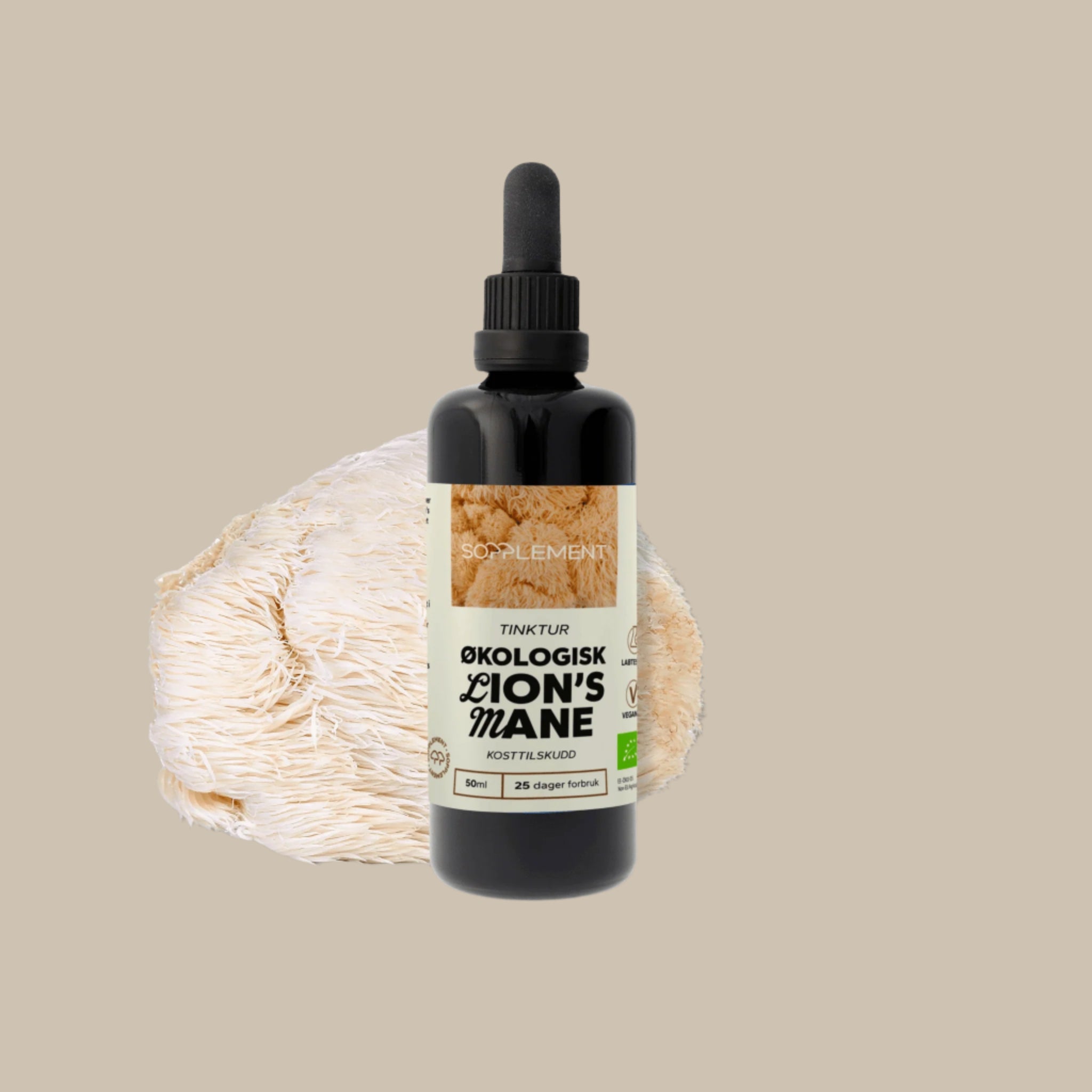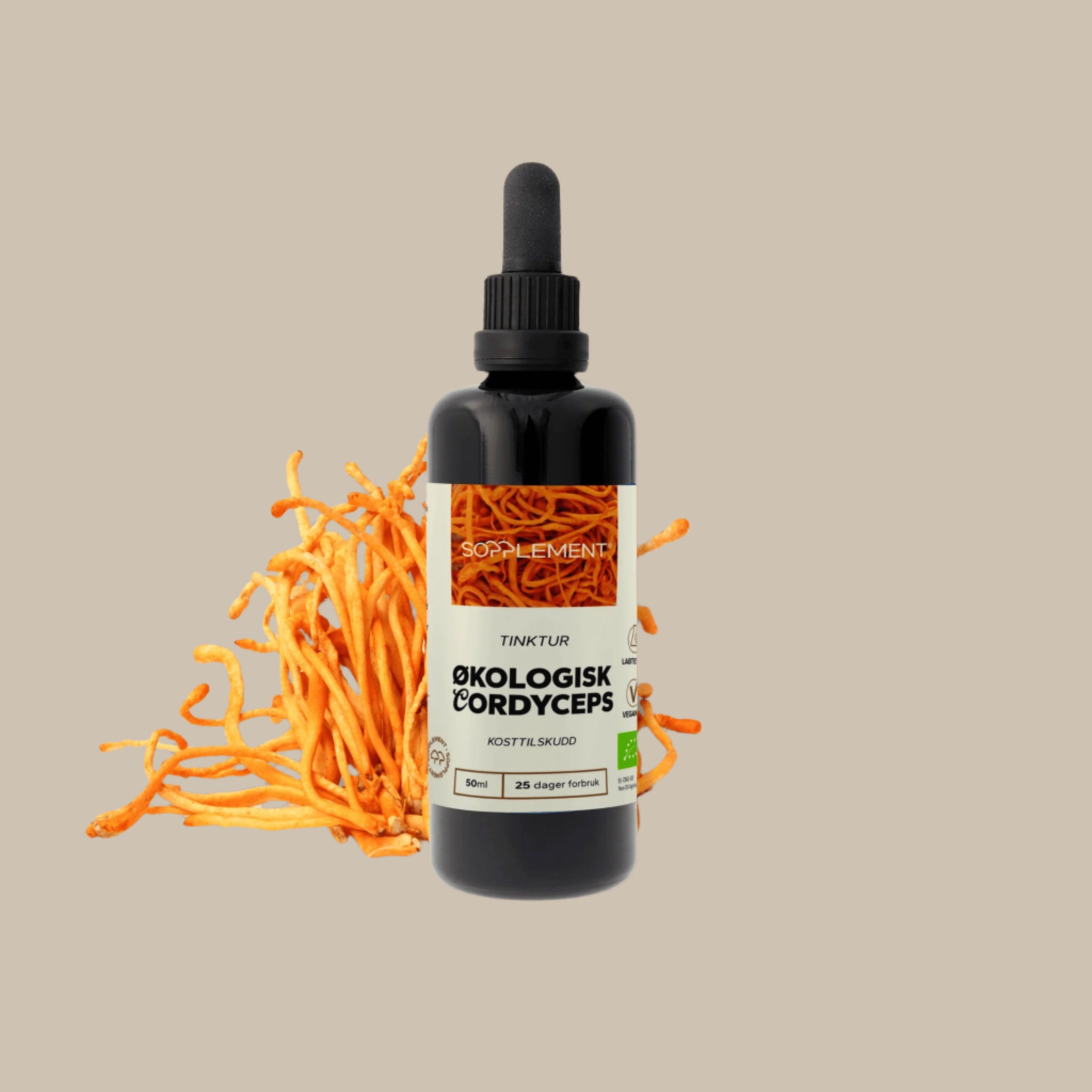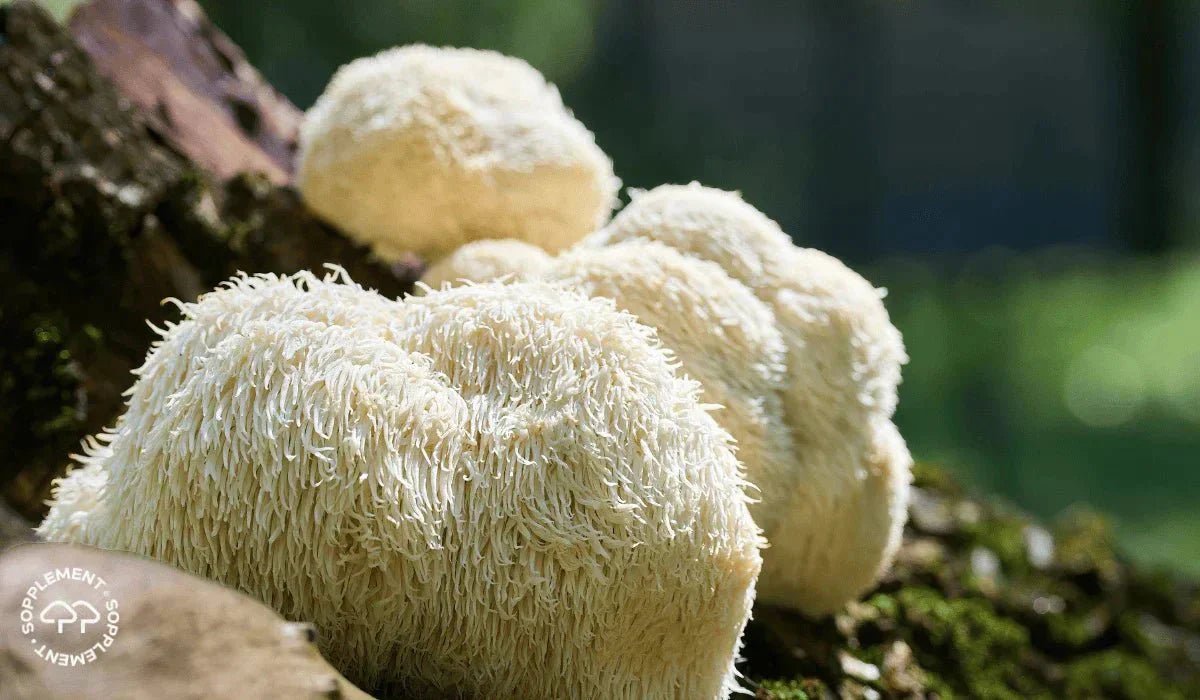
What is Lion's Mane? Benefits, Uses, and Research Explained
A complete review of Lion's mane - from traditional use to recent research.
What is Lion's Mane?
Lion's Mane (Hericium erinaceus) is a medicinal and functional mushroom that grows on dying or dead hardwoods , particularly beech and oak. It has long, white threads that give it a characteristic appearance like a lion's mane.
The mushroom is edible and is often used in cooking as its flavor is somewhat similar to lobster. In addition, Lion's mane is known for its possible effects on cognition, memory, and the nervous system .
Traditional Uses of Lion's Mane
Chinese and Japanese folk medicine
In Chinese herbal medicine, Lion's Mane has been used to support the spleen, digestion , and mental function . In Japan, it is known as Yamabushitake and has been used as a tonic among monks and meditators due to its supposed ability to support mental clarity and concentration.
How can Lion's Mane affect the brain and nervous system?
NGF - Nerve Growth Factor and Neurological Health
Lion's Mane has become a very popular mushroom due to its potential to support the brain and nervous system. It is mainly the compounds hericenones and erinacins that have been shown in preclinical studies to stimulate the production of NGF (nerve growth factor) .
What is NGF and why is it important?
Nerve growth factor (NGF) is a neurotrophic protein that helps nerve cells grow, survive, and form new connections. It is essential for the development and maintenance of the nervous system, both in children and adults.
NGF and Lion's Mane summarized
Lion's Mane, unlike synthetic alternatives, can have a mild , adaptogenic effect where the body regulates its response based on needs. However, it is important to emphasize that it must be combined with other health-promoting habits such as exercise, learning, and good sleep.
Want to learn more about Lion's Mane and NGF? Read our article: How can Lion's Mane affect the brain and nervous system?
Bioactive compounds
Lion's Mane contains Several interesting compounds that researchers believe may have effects on the nervous system, immune system, and digestion are found in various parts of the mushroom, both in the fruiting body and in the mycelium.
Hericenones and erinacines
Hericenones are found exclusively in the fruiting body and can stimulate the production of NGF.
Erinacins are found in the mycelium and have shown even stronger NGF-stimulating activity in some preclinical studies.
Erinacin A has demonstrated the ability to cross the blood–brain barrier and influence brain signaling processes.
Beet glucans
Beta-glucans are immunomodulatory polysaccharides that are water-soluble fibers in the cell wall of the fungus. Beta-glucans can activate macrophages and dendritic cells and are essential for the body's immune response .
Research also suggests that beta-glucans can balance gut flora and reduce chronic inflammation .
Phenols and flavonoids
Phenols and flavonoids can help reduce oxidative stress by neutralizing free radicals. These antioxidants have also shown anti-inflammatory properties.
Amylose-like polysaccharides
Amylose-like polysaccharides are complex carbohydrates that are similar to starch in structure, and can support blood sugar balance and intestinal flora - prebiotic effect and support beneficial bacteria in the intestine.
What does this mean to you?
Lion's mane contains many bioactive compounds with potential health benefits, but it's important to note that how the mushroom is extracted and processed affects which ones the body absorbs.
Please read our article: What is double extraction? How the active ingredients are affected for more information.
Forms of use and extraction
Common forms
- Tea - traditional use of dried fruit body
- Powder - powdered dried mushroom or spray-dried extract added to food and drinks
- Capsules - powdered or extract in capsule form
- Liquid extract and tincture - extract in water and/or alcohol
Extraction types and active ingredients
Water-based extraction
Hot water breaks down water-soluble parts of the cell wall and extracts polysaccharides, giving access to beta-glucans .
Alcohol-based extraction
The mushroom is steeped in alcohol over time, where fat-soluble substances break down and provide access to hericenones , erinacines and phenols .
Double extract
Water and alcohol are used to provide an extract that covers the full spectrum of nutrients.
Why use Lion's Mane in cooking?
When extracting bioactive compounds from Lion's Mane, it is important to know that you lose other important nutrients in the process:
Proteins and amino acids
Lion's Mane contains proteins of high biological value , including several essential amino acids that the body cannot produce itself. Amino acids will be lost in many extraction methods.
Fiber and dietary fiber
Untreated or lightly heat-treated mushrooms contain natural dietary fiber , especially chitin , which has a prebiotic effect and can support a healthy intestinal flora.
Vitamins and minerals
Lion's Mane is a natural source of several important micronutrients such as potassium, iron, zinc and selenium. These are important for the nervous system and immune system.
B vitamins such as thiamine (B1), riboflavin (B2) and niacin (B3) are also found - important for energy metabolism and mental function.
- Potassium, iron, zinc and selenium – essential for the nervous system, immune health and antioxidant defense
- B vitamins such as B1 (thiamine), B2 (riboflavin) and B3 (niacin), which are important for energy metabolism and mental function
NB! Riboflavin can theoretically be extracted with water, but is temperature sensitive.
Natural fatty acids
The content is low, but Lion's Mane does contain small amounts of essential fatty acids , such as linoleic acid (omega-6) and oleic acid (omega-9). These usually disappear completely during extraction.
Summary
Lion's Mane is a remarkable functional mushroom with deep roots in Eastern medicine and growing recognition in modern research. The mushroom has grown in popularity due to its potential to support brain function and the nervous system .
By choosing products with double extraction and clearly documented active ingredients, you get the best possible effect and bioavailability.
Remember Lion's Mane is also good to use in cooking!
Are you wondering when is the best time to take Lion's Mane for the best effect? Please read our article: When during the day should you take Lion's Mane?
